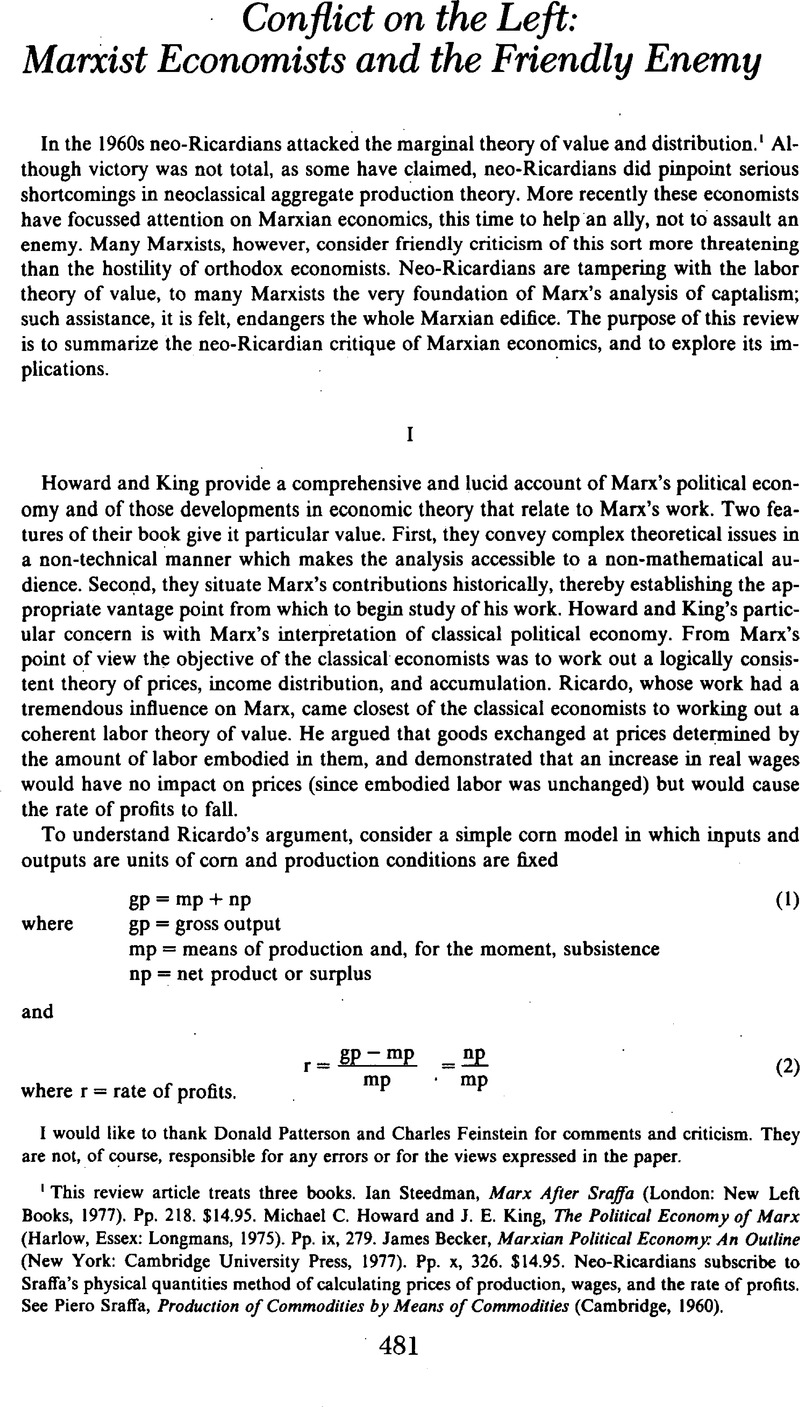No CrossRef data available.
Published online by Cambridge University Press: 11 May 2010

1 This review article treats three books. Steedman, Ian, Marx After Sraffa (London: New Left Books, 1977). Pp. 218Google Scholar. $14.95. Howard, Michael C. and King, J. E., The Political Economy of Marx (Harlow, Essex: Longmans, 1975). Pp. ix, 279Google Scholar. Becker, James, Marxian Political Economy: An Outline (New York: Cambridge University Press, 1977). Pp. x, 326. $14.95CrossRefGoogle Scholar. Neo-Ricardians subscribe to Sraffa's physical quantities method of calculating prices of production, wages, and the rate of profits. See Sraffa, Piero, Production of Commodities by Means of Commodities (Cambridge, 1960).Google Scholar
2 Howard and King, Political Economy, p. 143.
3 Steedman, Marx, pp. 14, 30.
4 Howard and King, Political Economy, p. 153; Sraffa, Production, chs. 4–5.
5 Becker, Marxian Political Economy, p. 293, reference 6 for Sraffa; pp. 6–7 for Robinson.
6 It should be noted that in Sraffa's model, luxury goods that do not enter into the production of other commodities have no affect on relative prices and the rate of profits. They can, perhaps, be considered unproductive in Becker's sense. They have, however, a very specific, quantifiable meaning in Sraffa's analysis.